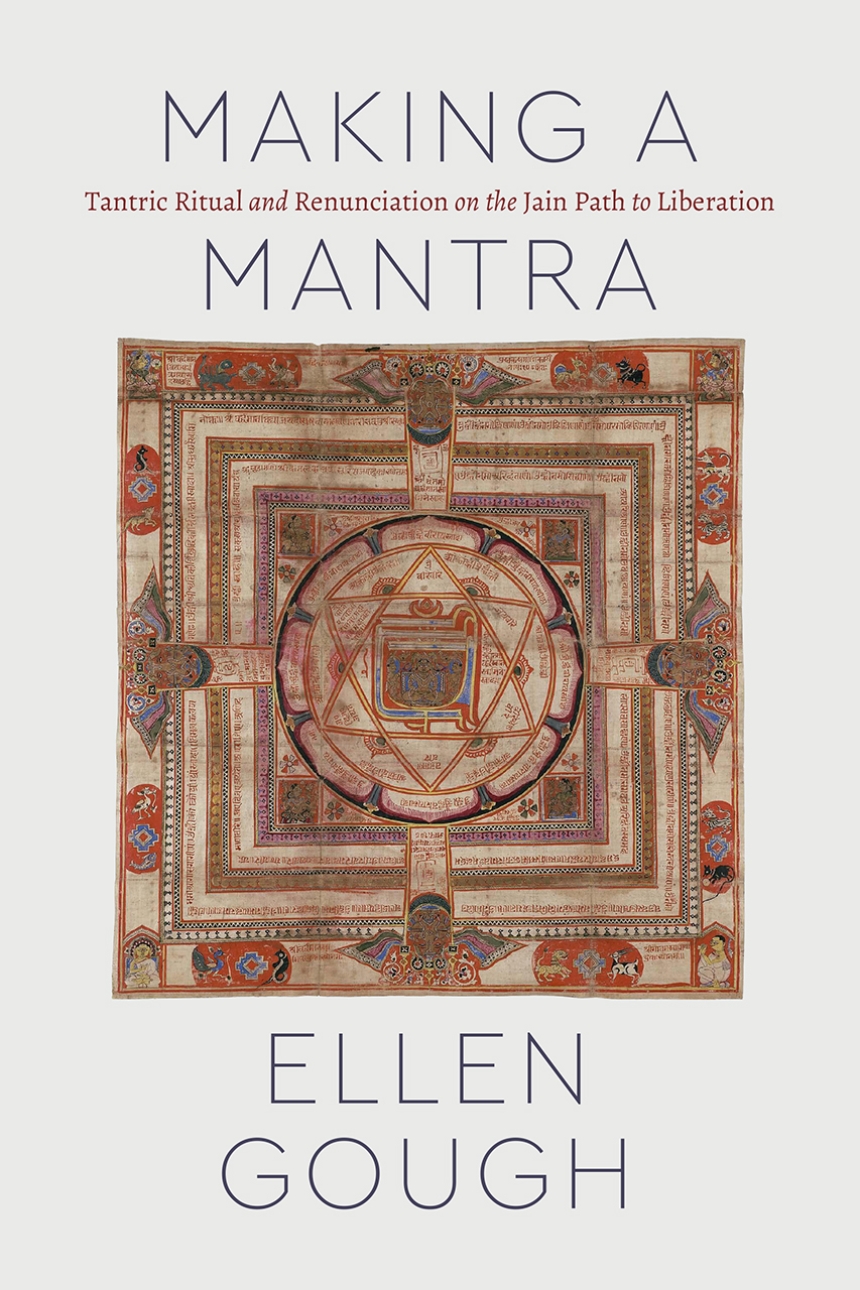Making a Mantra
Tantric Ritual and Renunciation on the Jain Path to Liberation
9780226767062
9780226766904
9780226767239
Making a Mantra
Tantric Ritual and Renunciation on the Jain Path to Liberation
Jainism originated in India and shares some features with Buddhism and Hinduism, but it is a distinct tradition with its own key texts, art, rituals, beliefs, and history. One important way it has often been distinguished from Buddhism and Hinduism is through the highly contested category of Tantra: Jainism, unlike the others, does not contain a tantric path to liberation. But in Making a Mantra, historian of religions Ellen Gough refines and challenges our understanding of Tantra by looking at the development over two millennia of a Jain incantation, or mantra, that evolved from an auspicious invocation in a second-century text into a key component of mendicant initiations and meditations that continue to this day.
Typically, Jainism is characterized as a celibate, ascetic path to liberation in which one destroys karma through austerities, while the tantric path to liberation is characterized as embracing the pleasures of the material world, requiring the ritual use of mantras to destroy karma. Gough, however, argues that asceticism and Tantra should not be viewed in opposition to one another. She does so by showing that Jains perform “tantric” rituals of initiation and meditation on mantras and maṇḍalas. Jainism includes kinds of tantric practices, Gough provocatively argues, because tantric practices are a logical extension of the ascetic path to liberation.
Typically, Jainism is characterized as a celibate, ascetic path to liberation in which one destroys karma through austerities, while the tantric path to liberation is characterized as embracing the pleasures of the material world, requiring the ritual use of mantras to destroy karma. Gough, however, argues that asceticism and Tantra should not be viewed in opposition to one another. She does so by showing that Jains perform “tantric” rituals of initiation and meditation on mantras and maṇḍalas. Jainism includes kinds of tantric practices, Gough provocatively argues, because tantric practices are a logical extension of the ascetic path to liberation.
296 pages | 20 halftones | 6 x 9 | © 2021
Class 200: New Studies in Religion
Asian Studies: South Asia
Religion: Comparative Studies and History of Religion, South and East Asian Religions
Reviews
Table of Contents
A Note on Transliteration and Translation
Pronunciation Guide
List of Abbreviations
Preface
Part One: Setting the Scene
Introduction. Tantra, Asceticism, and the Life of a Mantra
1. From Maṅgala to Mantra: Destroying Karma with Sound
Part Two: The Tantricization of Mendicant Initiation
2. Maṇḍalas and Mantras: The Jina’s Preaching Assembly as a Tantric Initiation Diagram
3. Sects and Secrecy: Comparing the Mantras of the Levels of Initiation
Part Three: The Tantricization of Daily Worship
4. Tantric Meditation as a Means of Liberation
5. The Tantric Rituals of Modern Monks
Conclusion: The Past Lives of Modern Mantras
Acknowledgments
Notes
Bibliography
Pronunciation Guide
List of Abbreviations
Preface
Part One: Setting the Scene
Introduction. Tantra, Asceticism, and the Life of a Mantra
1. From Maṅgala to Mantra: Destroying Karma with Sound
Part Two: The Tantricization of Mendicant Initiation
2. Maṇḍalas and Mantras: The Jina’s Preaching Assembly as a Tantric Initiation Diagram
3. Sects and Secrecy: Comparing the Mantras of the Levels of Initiation
Part Three: The Tantricization of Daily Worship
4. Tantric Meditation as a Means of Liberation
5. The Tantric Rituals of Modern Monks
Conclusion: The Past Lives of Modern Mantras
Acknowledgments
Notes
Bibliography
Awards
American Academy of Religion: AAR Best First Book in the History of Religions
Finalist
